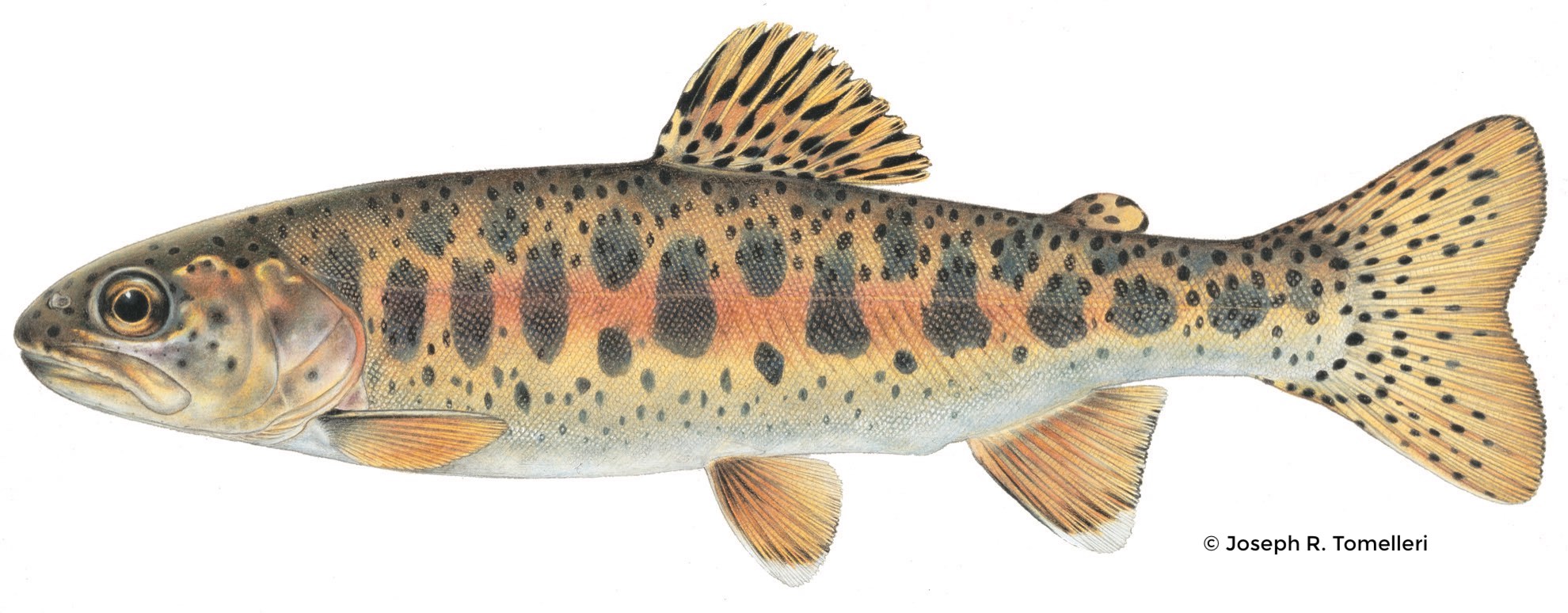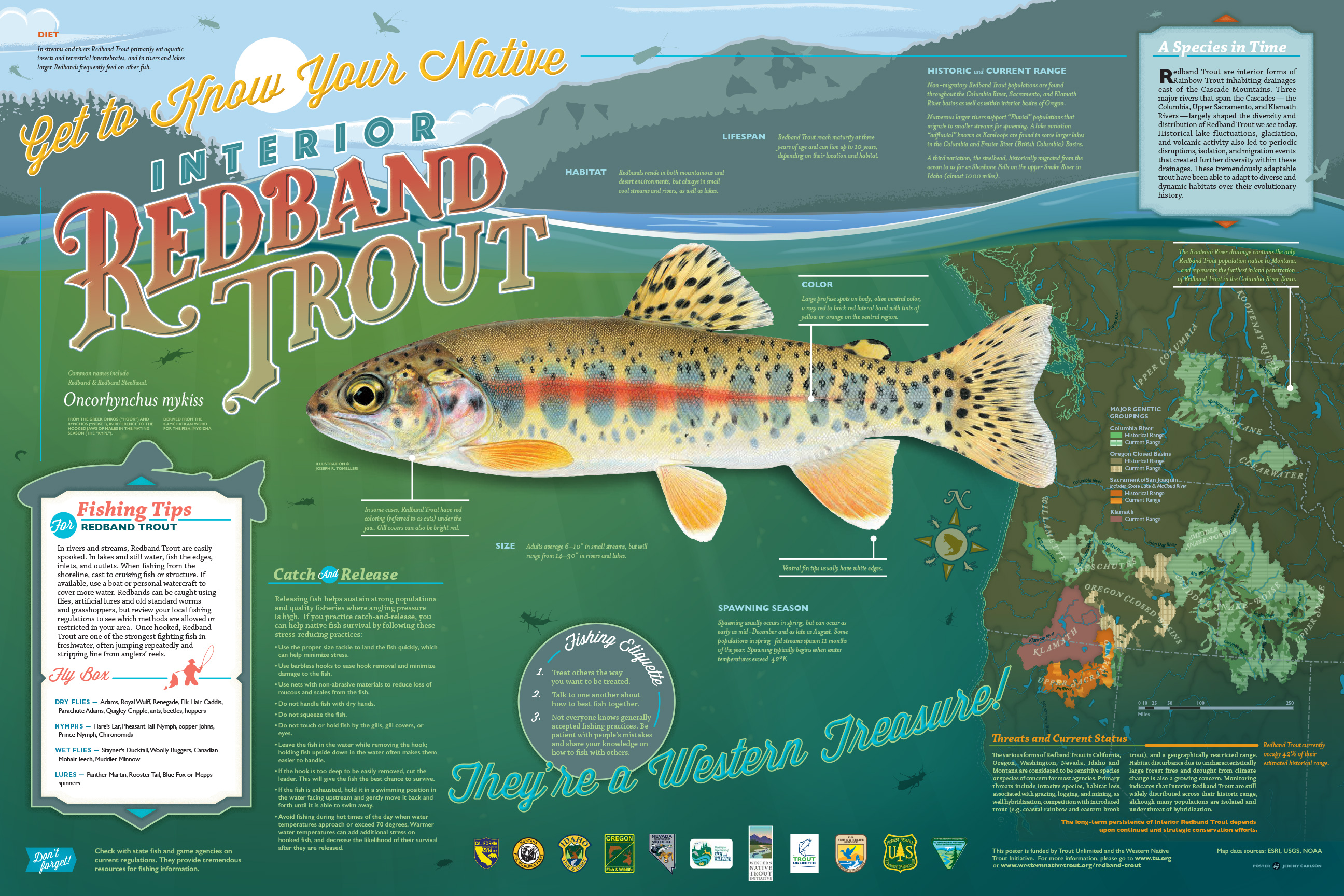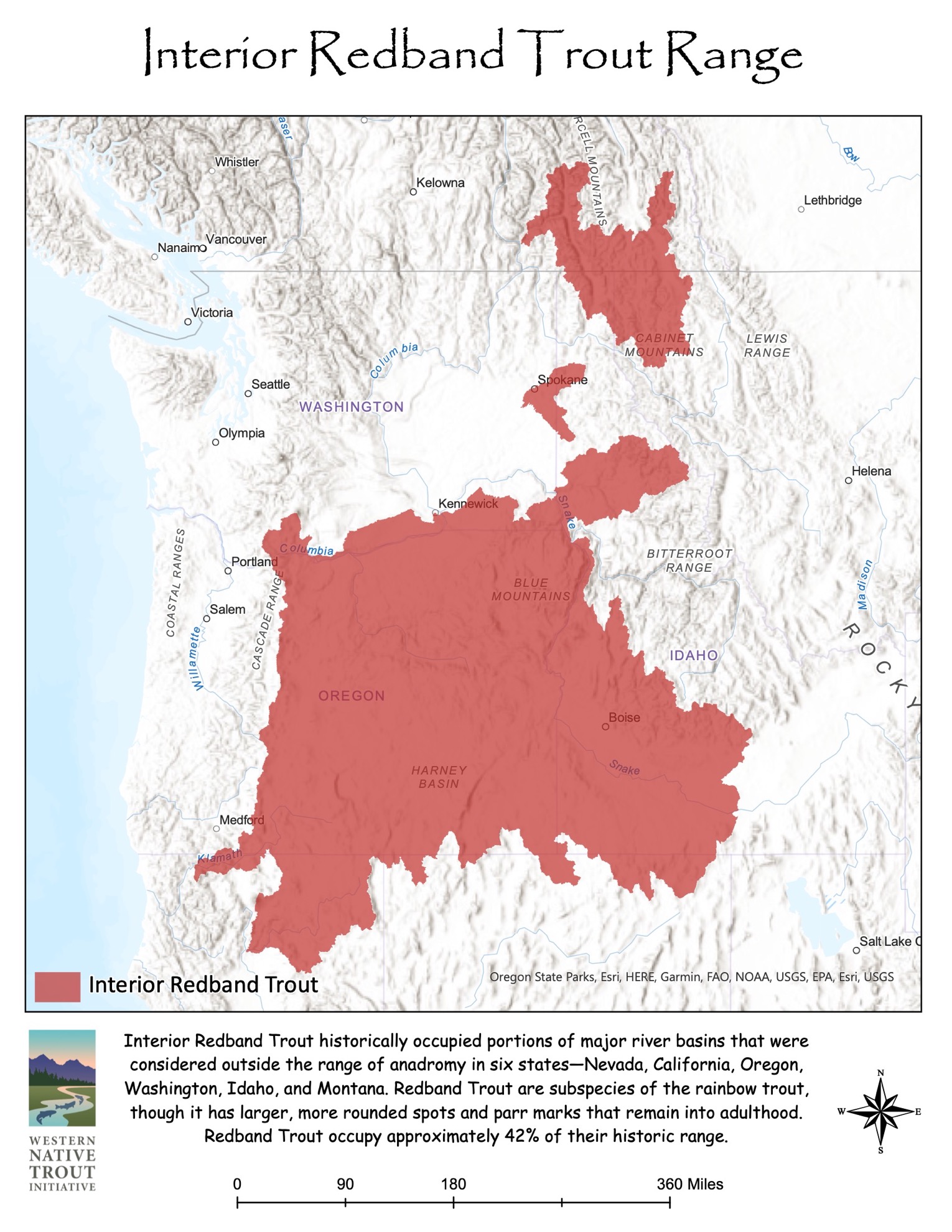
Redband Trout are subspecies of the rainbow trout and exist in two well-defined geographic regions. The Redband Trout is similar in appearance to the rainbow trout but has larger, more rounded spots and parr marks that remain into adulthood. They generally grow larger than 10 inches. Redband Trout that live in streams tend to have profuse large spots over their bodies and fins (except pectoral) and frequently have an orange cutthroat mark under the jaws. They have a rosy red stripe along lateral line to a brick red lateral band (especially in spawning males) and tints of yellow or orange along the ventral region. Gill covers can also be brilliant red.
Interior Redband Trout historically occupied portions of major river basins that were considered outside the range of anadromy in six states—Nevada, California, Oregon, Washington, Idaho, and Montana. They once occupied an estimated 60,295 km of stream habitat and 152 natural lakes in habitats in the drainages of the middle and upper Columbia River basins, the Kootenai-Pend Oreille- Spokane basin, the Snake River basin, the Oregon Closed Basins, the Klamath-northern California coast basins, the Sacramento basin, and the north Lahontan basin. Redband Trout currently occupy an estimated 25,417 km of stream habitat (42% of their historical range) and 124 lakes, or reservoirs. The Columbia River Redband Trout is found in Montana, Washington, and Idaho, and the Great Basin Redband Trout is found in southeastern Oregon and parts of California and Nevada.
Six states, four federal agencies, five tribal governments and one non-governmental organization signed a Rangewide Conservation Agreement for Interior Redband Trout in July 2014, agreeing to work together to conserve and protect habitat for this unique trout. The Conservation Agreement for interior Redband Trout is an example of the power of a partnership among state and federal fish and wildlife agencies and tribal nations that has been ongoing since 2009. Western Native Trout Initiative is proud to have been involved in the partnership, convening 13 workshops to complete a comprehensive status review for Redband Trout in partnership with the state fisheries agencies of California, Idaho, Montana, Nevada, Oregon, Washington, U.S. Fish and Wildlife Service, U.S. Forest Service, Bureau of Land Management and 11 tribal nations, as well as representatives from private companies. The project was funded through a grant from the National Fish Habitat Action Plan and matching funds from the partnering organizations through the Western Association of Fish and Wildlife Agencies. When the entire project was complete, the final results involved the expertise of upwards of 95 biologists and ArcGIS technical experts and 15 data entry personnel. Protecting this fish is a big job and we congratulate all our partners!
Between 2007 and 2021, the Western Native Trout Initiative has contributed over $1,388,373 to 39 projects benefiting Redband Trout, including catalyzing and leading the effort to complete the first-ever range-wide assessment and status review mentioned above. Other funded projects have been diverse –everything from genetic analysis, telemetry surveys, culvert renovation, levee removal, road relocation, fish ladders, fish screens, streambank stabilization, large watershed improvement projects and outreach/education efforts.


Additional Resources
- Educators and parents, READ this informative guide for kids to Redband Trout by Idaho Dept of Fish and Game (May 2020)
- READ the conservation strategy for interior Redband Trout in California, Idaho, Montana, Nevada, Oregon and Washington (Nov 2016).
- READ the 2015 Status and Conservation of Interior Redband Trout in the Western United States, North American Journal of Fisheries Management, 35:1, 31-53, DOI: 10.1080/02755947.2014.951807.
- READ the final report for the six year Great Basin Redband Trout genetic assessment (which received funding from WNTI in 2012).
